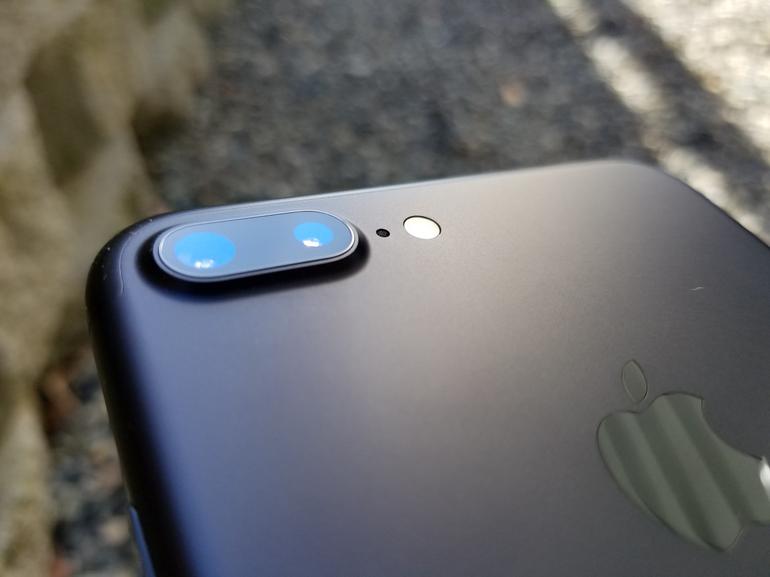

No matter how many exciting and interesting Android smartphones I test, my SIM keeps finding its way back into the Apple iPhone 7 Plus on a regular basis.
For the first time in a while, the Apple iPhone fell off the top of my biannual best 10 smartphones list, but later this year Apple may come out with its 10th anniversay edition iPhone and again claim the top spot.
Yesterday I posted 11 reasons the Galaxy S8 is better than the Apple iPhone 7 for business. In order to offer both sides of the story, I offer this converse list why you may want to consider the Apple iPhone 7 Plus.
- Operating system updates: While Samsung has done a great job over the past year in getting out timely monthly Android security updates, the Android 7.0 Nougat update didn’t arrive for most S7 devices until the S8 was available to pre-order. With Samsung leading all others on the Android platform, I’m surprised it still can’t update like Apple. Apple gets it software updates out to all users on the same day and when you buy an iPhone you can rest assured it will be well supported for at least a couple years.
- Dual cameras: Several smartphone manufacturers now have dual rear cameras with a different emphasis, but in this area Samsung lags behind the pack. The Apple iPhone 7 Plus has a secondary camera that provides a 2x optical zoom and a portrait mode for good quality bokeh effect images. The Galaxy S8 Plus has the ability to provide bokehs with its single lens and the camera is one of the best, but there are limitations on its creativity too.
- Responsive performance: Apple’s own quad-core A10 processor operates on only two cores at once, but combined with the iOS operating system it flies. Side-by-side videos still show that the iPhone 7 Plus is more responsive than the Galaxy S8 Plus, despite the higher capacity RAM and fastest Qualcomm processor being present on the S8 Plus.
- 3D Touch: Apple’s 3D Touch provides a number of quick actions to help you be more productive and efficient, in addition to peek and pop previews in many apps. Android now has some press and hold actions, but they are extremely limited and mostly generic so do not add much value at this time.
- Free of bloatware: A few US wireless carriers are terrible at releasing Samsung Galaxy devices free of bloatware. Sprint, AT&T, and Verizon load up Samsung Galaxy devices with a plethora of useless app, games, and utilities that cannot be removed. Apple has a special kind of power over carriers with the same iOS experience released across all carriers. If there are any custom carrier apps on board, they can easily be removed from the iPhone.
- Local support: One major reason to purchase an Apple iPhone is the availability of a local Apple store where you can talk to someone directly and often resolve the issue with your iPhone at that moment. Even if you purchase Samsung’s device protection plan, you still have to resolve your issue via delivery services. Smartphone are crucial tools for many people and the ability to fix the problem immediately in a store is why millions pay a premium for the Apple iPhone.
- Front fingerprint scanner: While I have gotten used to some rear fingerprint scanners, such as the one on the LG G6, because that is where your finger rests when you pick a device up, I still prefer front scanners that I can activate when the phone is resting on a table. The S8 Plus fingerprint scanner is oddly placed off centerline and is likely to present targeting issues. There are other methods to unlock the phone, but the front fingerprint scanner on the iPhone 7 Plus is extremely quick and accurate. I never feel a slow down in my device use with the Apple iPhone 7 Plus.
- iMessage: You may think that having iMessage on an enterprise list is unwarranted, but Apple has opened up Messages so third parties can enable support for this important platform. We have seen apps, such as Evernote, Trello, and Dropbox, add Messages support to help its users share and interact with others on iMessage.
10 years ago, Apple shook up the smartphone world with the launch of the first iPhone. While those of us who have been around a long time know there was a world of smartphones and PDAs prior to the iPhone, many people assume the Apple iPhone was the first smartphone. The interface hasn’t change drastically, but there is some amazing tech in the iPhone 7 today and Apple tends to perfect technology and experiences in its new devices.
We are sure to see some improvements in the processor, camera, and design with the next iPhone. The Samsung Galaxy S8 Plus sets the bar, but in a few months the next iPhone may take the title from Samsung. Then again, there will be a new Note from Samsung released about the same time as the next Apple iPhone.
Related ZDNet iPhone 7 coverage

